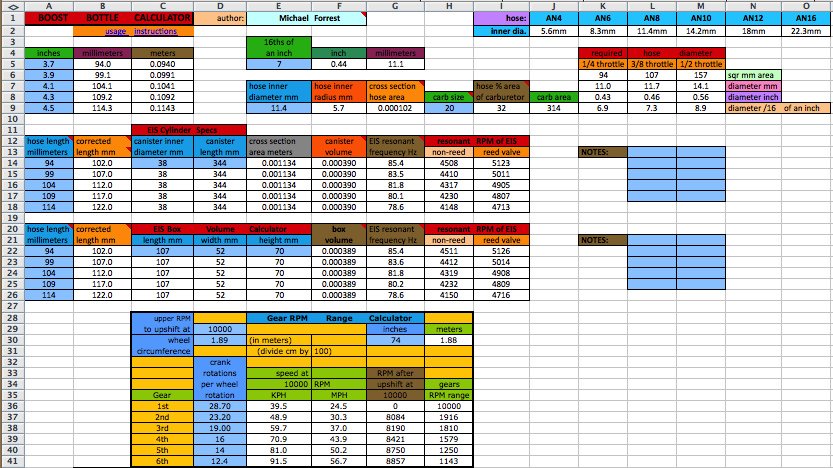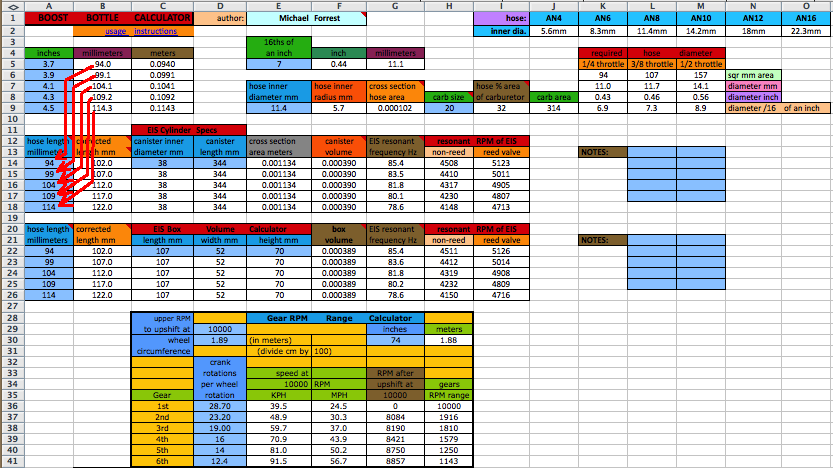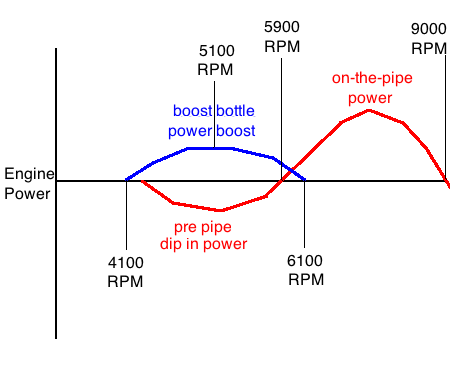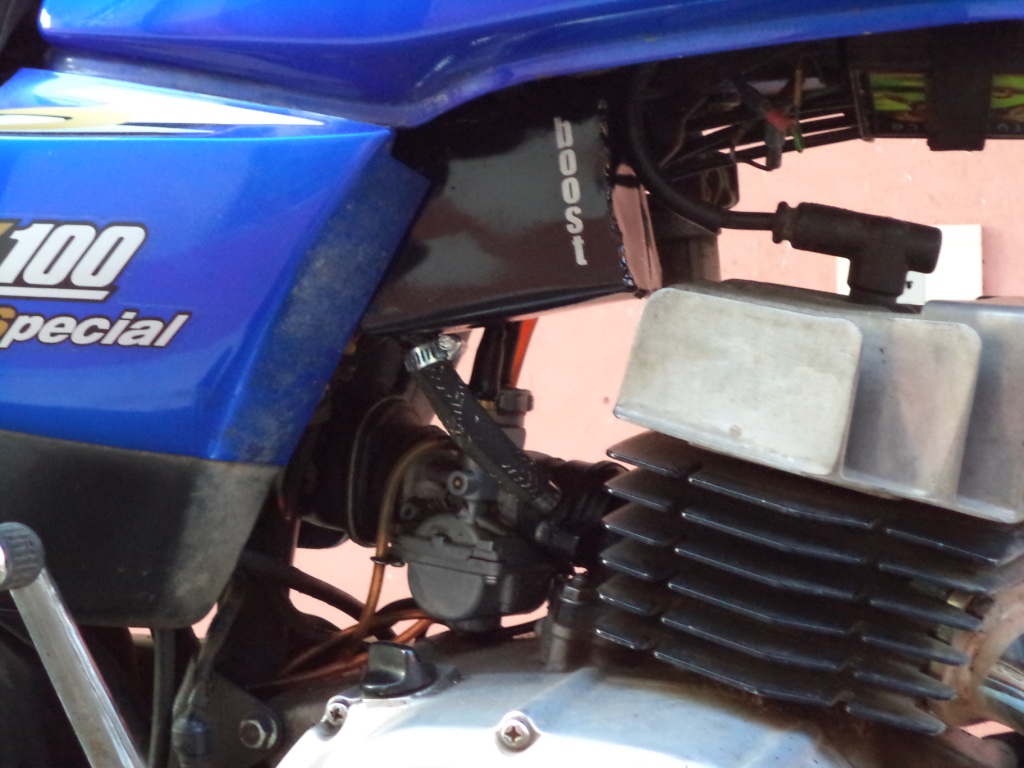|
The data entry cells on this spreadsheet are all in light blue. Don't try to enter anything in any white cells. The light blue entry boxes with a medium blue colored heading are essential for the programs calculations. Read my page about EIS to be fully informed before designing a boost bottle. Use the "required hose diameter" at the top right hand of EIScalc to figure what hose diameter to use. Put the value you want to use at E9 and the carb size at H9 to see what percentage of the volume the hose area is at I9. In this example my 11.4mm inner diameter hose is close to midway between the right size for 1/4 throttle and 3/8 throttle. You might want to find out how far open you normally have the throttle when your engine is just below the pipe powerband and match the hose diameter according to that. I went ahead and used the AN8 but maybe the AN10 would of been a little better since I probably do have the throttle half way open as the revs are creeping up to get into the powerband.  If you know the hose inner diameter in 16ths then put the number of 16ths you will use in cell E5. Put the number of equivalent millimeters that shows in G5 into E9. Enter the range of hose lengths you are considering using into the cells from A5 to A9. Now put the equivalent millimeters showing in B5 to B9 into the cells at A14 to A18. You can round off the numbers.  If you are using a box for the EIS canister (like I am) then enter its dimensions in C22, D22, and E22 in millimeters. The volume for that box shows at F22 in cubic meters. You can move the decimal place to the right 6 digits in your mind to give you the equivalent size in cubic centimeters (cc). If you are using a cylinder for the EIS canister then enter its dimensions in C14, D14, and E14 in millimeters. The volume for that box shows at F14 in cubic meters. If you only know ithe cylinders outer diameter then estimate the wall thickness, multiply it by 2, and subtract that from the outer diameter. 2-4 times the volume of your engine is normal for the canister volume. What is important is that you get the resonant RPM you want. You can vary the cylinder volume and the hose length to manipulate that RPM. Once you have a cansiter and want to verify its volume then just pour water into it till it fills up to the base of its neck. Then pour it out into a measuring cup. Go to any metric converter on the internet to change ounces to cubic centimeters and then move its decimal point to the left 6 places to get cubic meters. Then enter any combination of numbers at C14 and D14 till that same volume shows at F14. For instance 5 ounces equals 147cc which is .000147 cubic meters. By trial and error I find that 40mm diameter and 117mm length equates to 147cc. The resonant RPM for reed and non-reed engines shows are both displayed. The trick is to get the dimensions of the box/cylinder and the length of hose that easily fits on your ride to also give you the resonant RPM you want. Sometimes you have to compromise. In this example I am targeting 4900 RPM for a reed valved engine so the hose and connector length should be 104mm (4 inches). Notes for the project can be put into the light blue boxes to the right. If you have any questions you can see my email by putting the mouse pointer over my name on the program. And if you'd like to enthusastically share your results and pictures then I can post them on my site as inspiration for others. Project Suzuki I know that my bike starts to get on the pipe power at 5900 RPM. So I wanted the EIS boost to be before that but overlap just a tad. Ideally I'd like the end of the 2000 RPM boost powerband to end 200 RPM higher than the beginning of the pipe powerband. Here is the illustration of what I'm saying:   HOME Visits Count starting Jan 29 2017 |